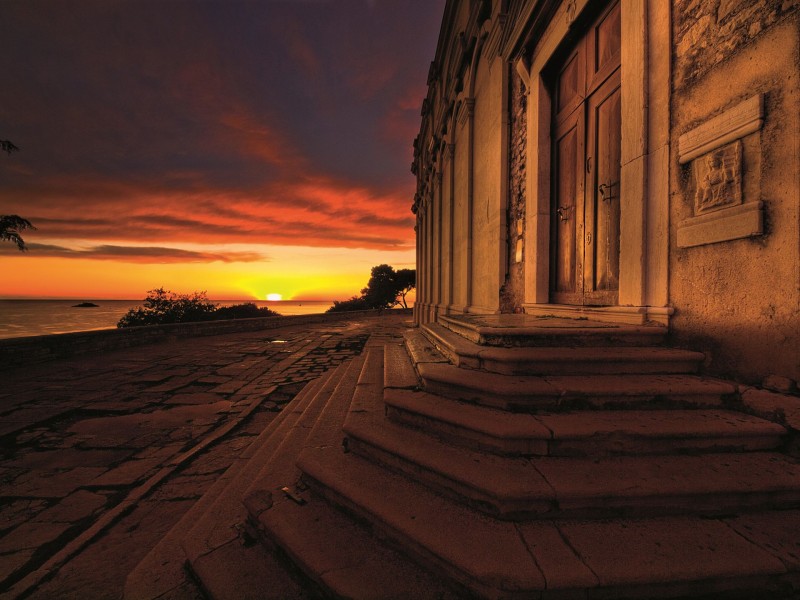Incredible discovery below the church of St. Euphemia
11.01.2018
St. Michael the Archangel's Church was discovered beneath the church of St. Euphemia. After more than 100 years, one of the 32 tombs built and stacked up to the walls surrounding the church was opened duo to the paving of the western plateau in front of the church of St. Euphemia.
The opening of the tomb revealed the church of St. Michael the Archangel. Although it was known that it was buried there, its discovery during archaeological excavations was a real sensation! According to the historian and deputy mayor of Rovinj, Marino Budicin, the church is in a relatively good condition, thus enabling the valuable history of the town of Rovinj to be read from the walls, vaults and arches.
The top of the island hill where Rovinj was built between the 3rd and 5th century, is an area of special historical and archaeological interest. Namely, the first parish church was built at that time surrounded by the first Rovinj cemetery that was used until the 18th century. In the Middle Ages, right next to the church dedicated to St. George and St. Euphemia, three more churches were built: St. Michael the Archangel's, St. Rocco’s and St. Ursula’s. Later on, in 1673, at the top of the Grisia Street, the church of St. Joseph was erected next to the cathedral.
Considering that the old parish church was in a very bad state in 1720, the Town Council decided to renovate it so it better reflects the importance that Rovinj had at that time in Venetian Istria, resulting in the demolition of the church of St. Rocco and St. Ursula as well as the church of St. Michael the Archangel.
The project of hard landscaping of the square of St. Euphemia has begun in 2015 and includes two separate phases: the repair of the western part and then of the southern part of the cemetery. Considering that beneath the southern part there are numerous tombs as well as St. Michael the Archangel's Church, detailed archaeological research of this area has been planned.
Future archaeological research should do more detailed studies of all historical aspects and architectural structures of this underground church, which is certainly unique on the regional level and which still has many secrets yet to be discovered, valorised and brought closer to scientists and the general public.

